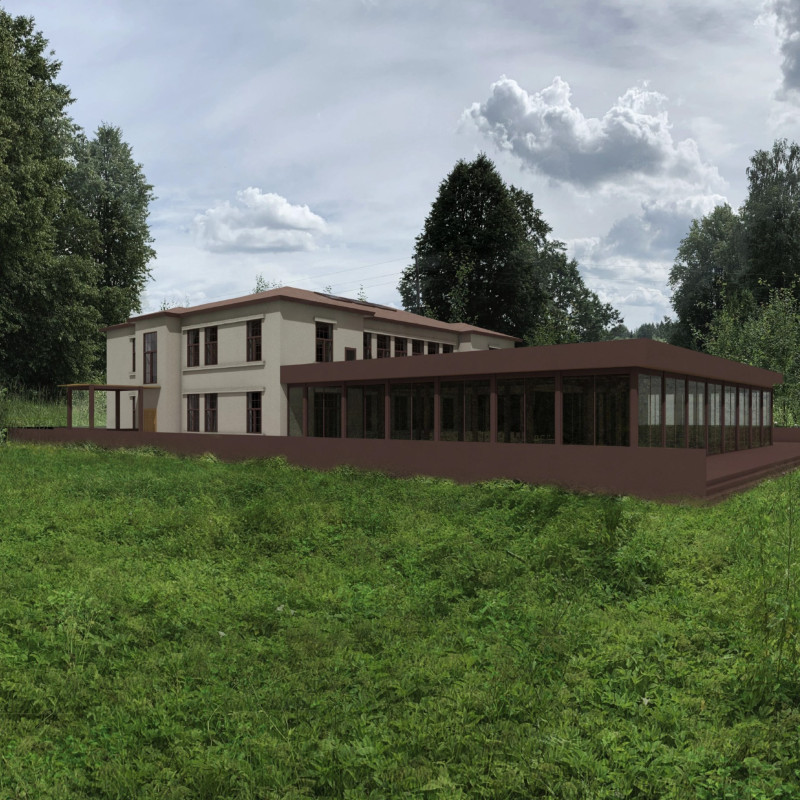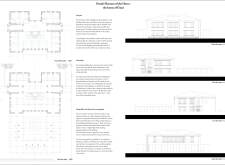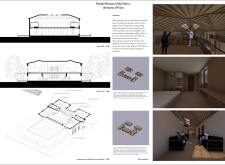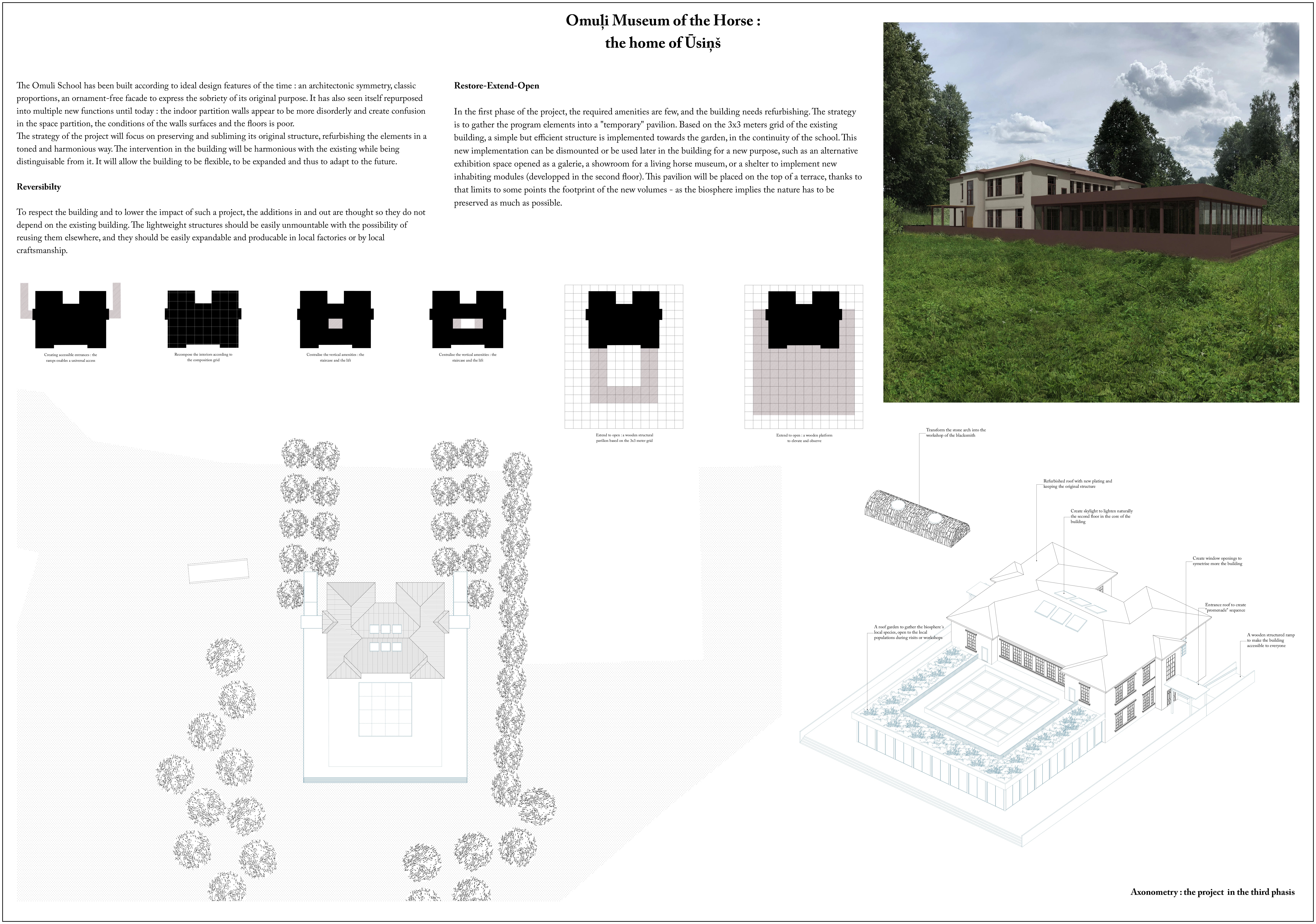5 key facts about this project
The architectural design effectively merges contemporary aesthetics with historical context, achieving a balance between the old and new elements. The structure incorporates existing buildings into its design, demonstrating adaptive reuse principles. This approach not only preserves the historical integrity of the site but also enhances the functionality of the museum.
Modular Design for Flexibility
A key aspect of the design is its modular approach, allowing for adaptability in usage and expansion. This project features a series of interconnected spaces that can be configured for various activities, such as exhibitions or workshops. The use of lightweight materials, primarily wood, contributes to a sustainable construction process, with an emphasis on minimal environmental impact.
The suspended structural elements create visual interest and spatial dynamism, while large glass surfaces facilitate natural light, reducing the reliance on artificial illumination. The design promotes an indoor-outdoor flow, blurring the boundaries between exhibit spaces and the surrounding landscape.
Integration with the Environment
Another unique feature of the Omulji Museum of the Horse is its integration with the natural environment. The architectural layout takes advantage of the landscape, incorporating outdoor areas for events and activities. This interaction with nature not only enhances visitor experience but also reflects the cultural connection between the community and the equine world.
Landscaping plays a vital role in the project, providing areas for outdoor exhibitions and educational programs. The incorporation of greenery further establishes a serene atmosphere that encourages engagement with both the museum and its surroundings.
For deeper insights into the architectural designs, architectural plans, and architectural sections of the Omulji Museum of the Horse, interested readers are encouraged to explore the project presentation. The detailed examination of structural elements and design ideas within the project underscores its significance in contemporary architecture focused on cultural preservation and community engagement.


























